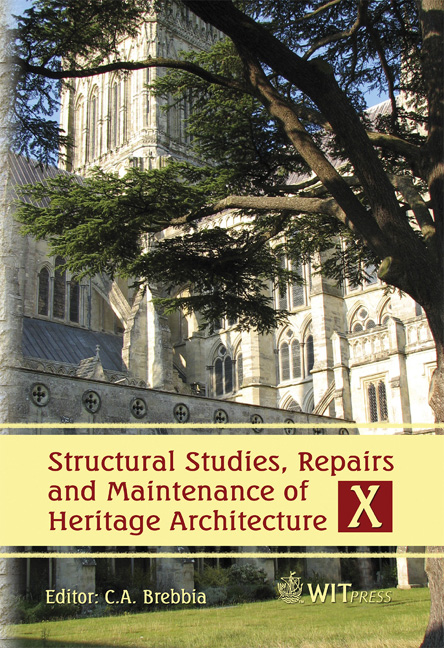Rehabilitation Of Uncommon Medieval Timber Structures
Price
Free (open access)
Transaction
Volume
95
Pages
8
Published
2007
Size
2,542 kb
Paper DOI
10.2495/STR070281
Copyright
WIT Press
Author(s)
S. Niederhagemann
Abstract
In the Middle-Ages the half-timbered construction was widespread in Europe. Living, business and craft houses were erected with wooden skeleton constructions which were filled with different materials. These constructions were maintenance-extensive, but buildings could be erected relatively quickly and in a low-cost way. Today, numerous medieval buildings of this type are preserved. During the rehabilitation of these buildings, which are mostly classified as historical monuments, there are special challenges to the engineer. The adaptation to contemporary building standards, the vulnerability of these constructions and the limited possibilities of a new use are the tasks for the planner. This contribution introduces experiences with the repair planning of half timbered houses with unusual structures. The text mainly refers to a former weaving mill from the year 1611 and a miner’s house from the year 1583. The weaving mill is fitted with an unusual cantilever beam in the gable in order to achieve a larger space in the building on the straightened ground conditions. It was re-worked extensively in 2005. A local historic museum has been housed in this building since 1962. The miner’s house is fitted with, what is for this period, an unusual roof truss. For this building, investigations for the development of a lasting use concept are currently being carried out. Keywords: timber, rehabilitation, construction. 1 Bügeleisenhaus 1.1 History The so called \“Bügeleisenhaus” (iron house) was erected in 1611. In 1620 a building on the gable side was added. In the wood above the entrance the constructor’s initials can be seen, combined with a trade mark.
Keywords
timber, rehabilitation, construction.




